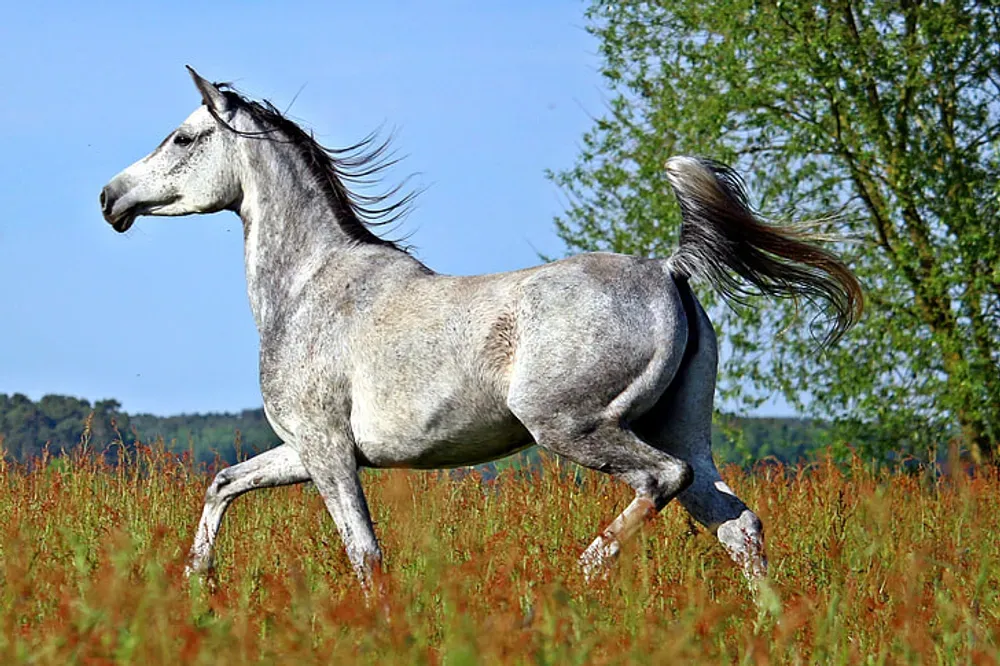
Table of Contents
Bedouin Fable!
"The wind of heaven is that which blows between a horse's ears."
Unveiling the Enigmatic Power of Arabian Horses
Arabian horses, revered for their enchanting beauty, exhibit a captivating blend of delicate heads, high-set tails, and slender, graceful bodies that leave an indelible mark on equine enthusiasts worldwide. However, it is beneath this exterior allure that these horses house an extraordinary strength and resilience, a secret that has etched their names into the annals of horse history.
Originating from the arid deserts of the Arabian Peninsula, the Arabian horse's lineage spans over 2,000 years, a testament to its enduring legacy. Bedouin tribes, known for their profound appreciation of these majestic creatures, meticulously bred them, carving out a breed that seamlessly combined aesthetics with unmatched endurance, speed, and loyalty.
Bedouin fable!
"A Bedouin can't live without his horse; it's his soul in the desert."
The Endurance Pioneers
Undoubtedly, the Arabian horse's most remarkable trait lies in its endurance and strength, making it a distinguished breed in the world of long-distance racing and endurance competitions. These equines can traverse vast distances at a sustained pace while carrying substantial loads, a testament to their desert-bred heritage. Let's dive into some historical and contemporary examples to shed light on the indomitable spirit of Arabian horses.
USA Cavalry Endurance Rides: 300 Miles in 5 Days
In a rigorous test of suitability for military purposes, Arabian horses have repeatedly demonstrated their prowess. The tests, spanning five gruelling days, required horses to carry riders and tack while being judged for their condition and ability to continue. Notably:
- In 1919, a purebred Arabian mare carried a staggering 200 pounds to victory.
- In 1920, when all horses carried 245 pounds, Arabian horses boasted the highest average points among all breeds.
- In 1921, with all horses carrying 225 pounds, the winner was a purebred Crabbet Arabian gelding.
Annual USA Tevis Cup Endurance Ride: 100 Miles in One Day
The Tevis Cup, a 100-mile marathon, stands as a true test of endurance for horses. In 2004, several Arabian horses rose to the occasion, securing top positions while carrying substantial loads:
- AV Eli claimed the 1st position, carrying 200 pounds.
- St Patrick came in 4th, carrying 212 pounds.
- Sunwood Risk achieved 7th place, bearing a weight of 221 pounds.
- Halani earned the 10th position, with a 203-pound load on its back.
Cracking the Code: What Makes Arabian Horses So Strong?
The formidable strength of Arabian horses can be attributed to several key factors:
- Unique Anatomy: Arabians have one less rib and one less lumbar vertebra than other horses, resulting in short, sturdy backs and loins.
- Broad Loins: These horses typically possess wider loins in proportion to their frame size, granting them the strength to carry riders.
- Mechanical Advantage: Long forearms and short cannon bones provide a significant mechanical advantage, contributing to their strength.
- Cannon Bone Circumference: Arabians exhibit large cannon bone circumferences relative to their weight, offering exceptional strength-to-size ratios.
- Bone Density: Like all small riding horses, Arabian horses boast impressive bone density, further enhancing their strength.
Bedouin Fable!
"The best rider is one who can control his horse with just a whisper."
The Verdict
In summation, a typical 15-hand high Arabian horse, weighing in at 900 pounds, can comfortably carry 200 pounds or 14 stone 4 pounds. This remarkable strength, combined with their enduring spirit and breathtaking beauty, cements the Arabian horse as an iconic symbol of equine excellence, proving that true strength often lies beneath the most delicate exteriors.
FAQs
Can Arabian horses live out in Winter?
Do you find Arabians as tall as 16hh?
Do Arabians need more feeding than most horses?

Article Suggestion
Debunking the 20% Rider Weight Rule for Horse Riding
